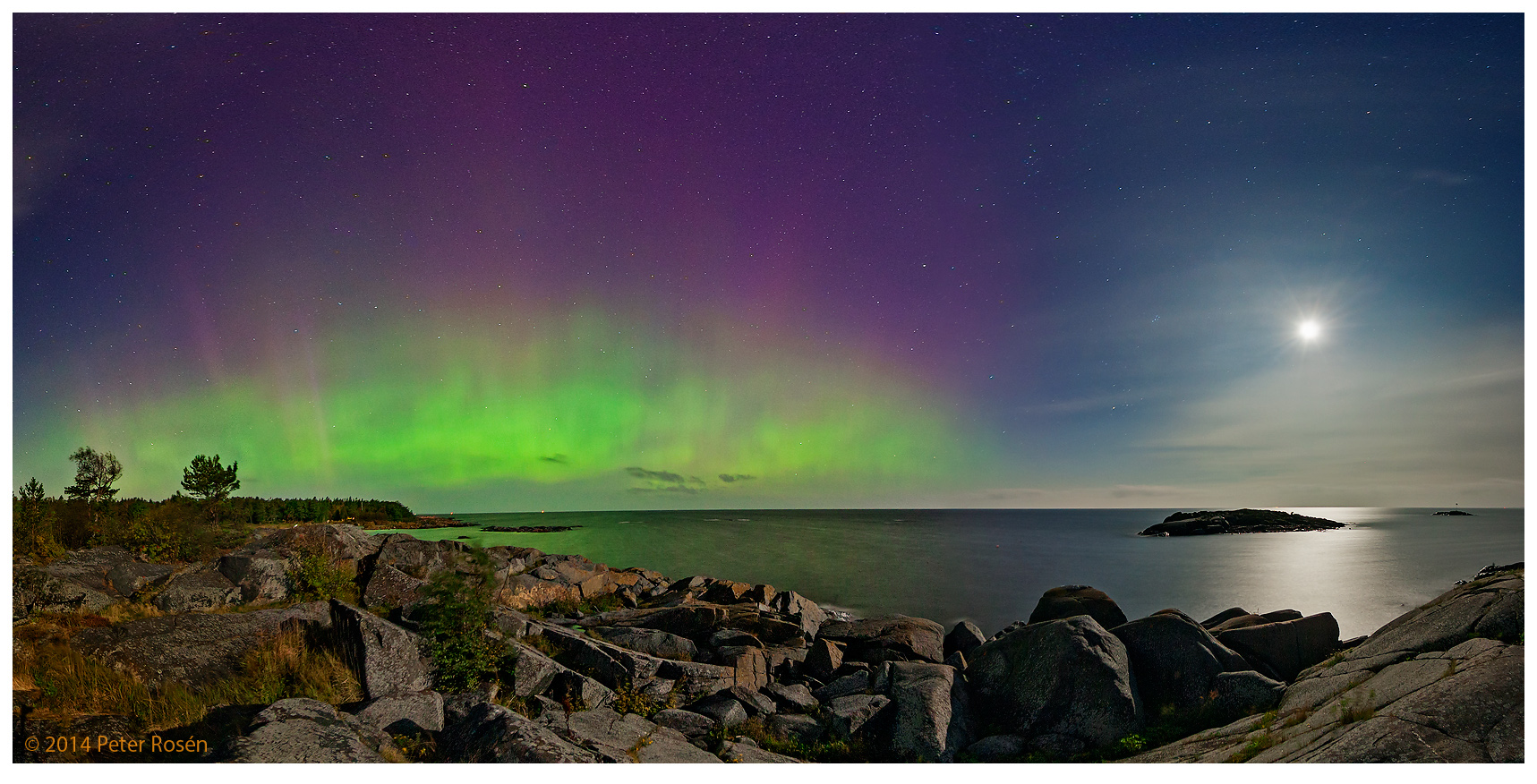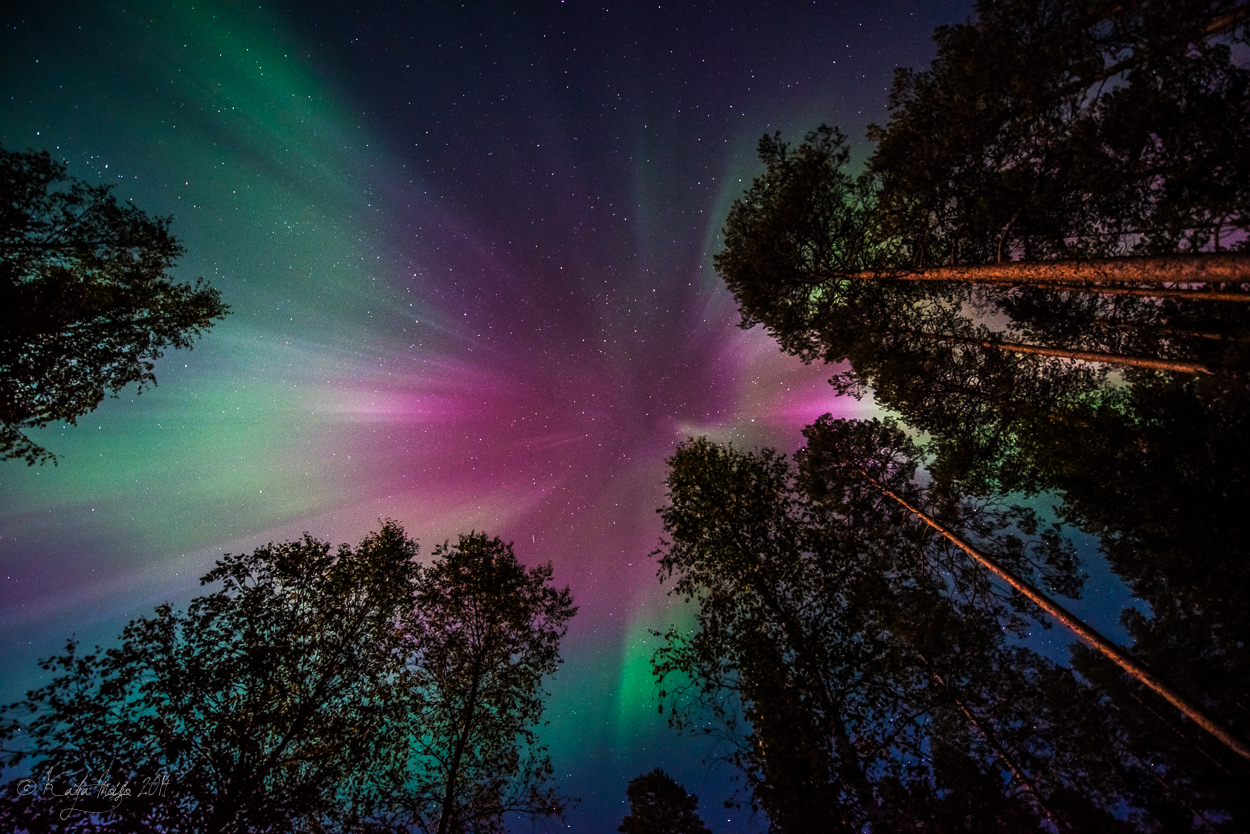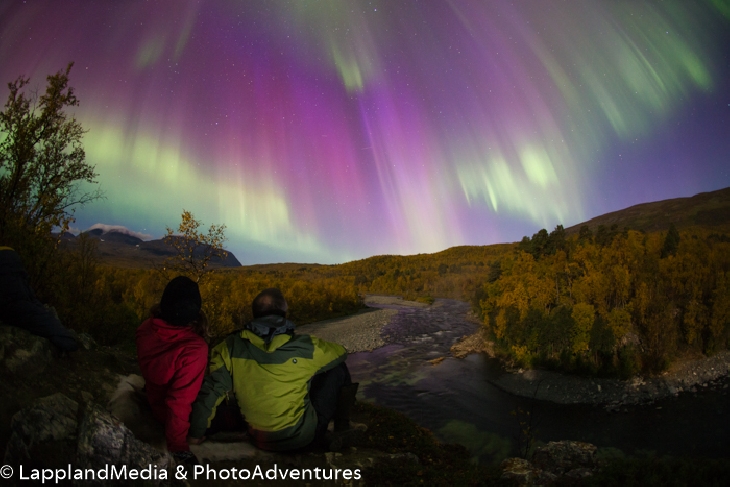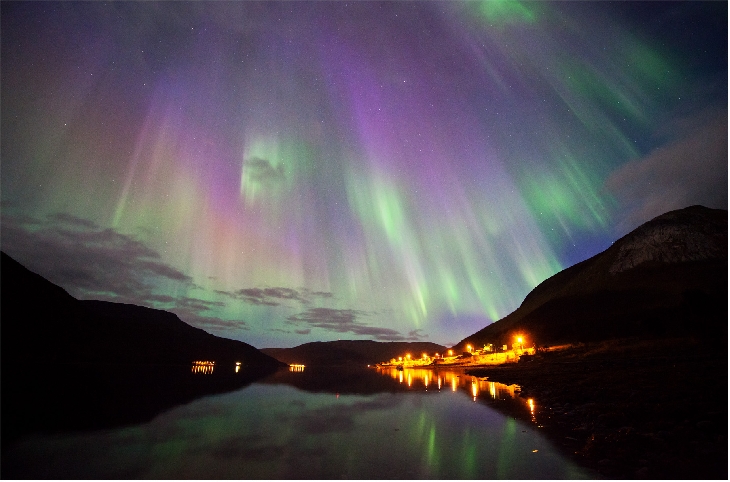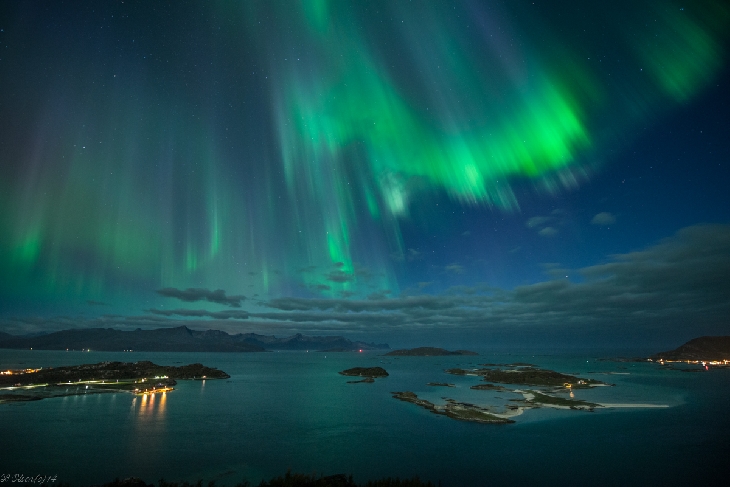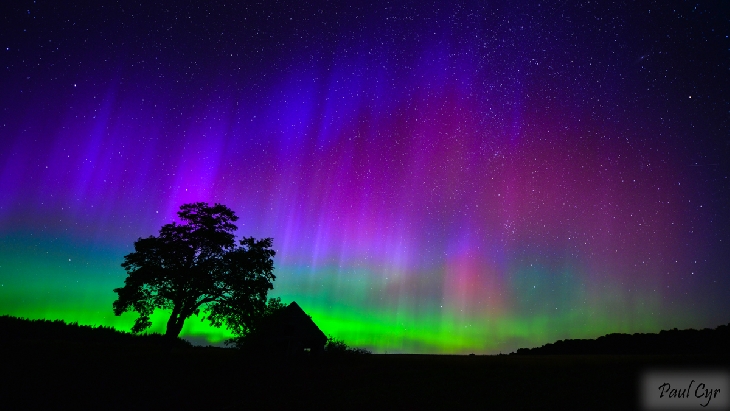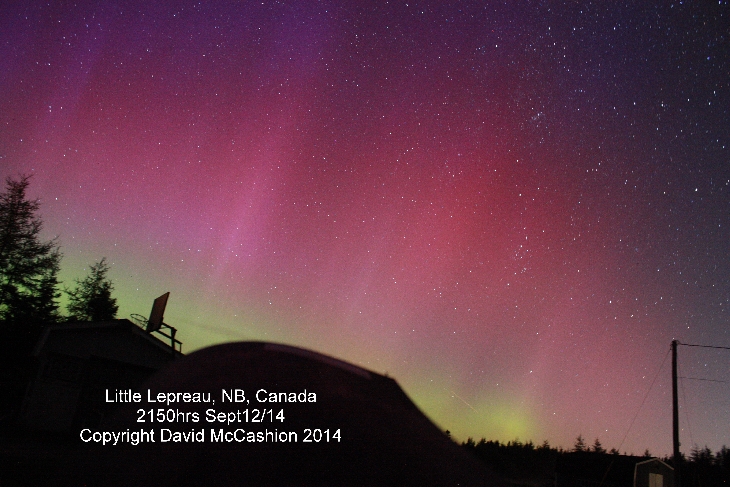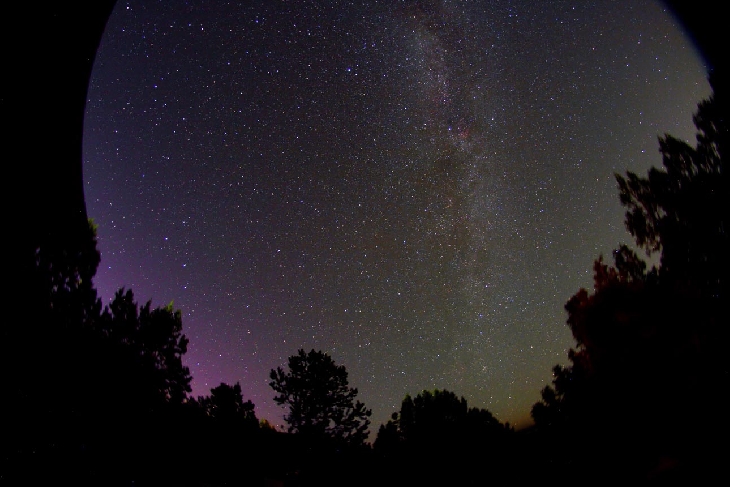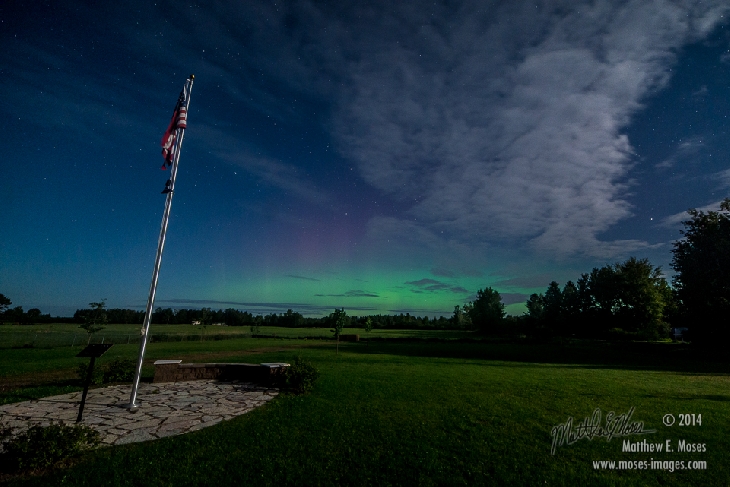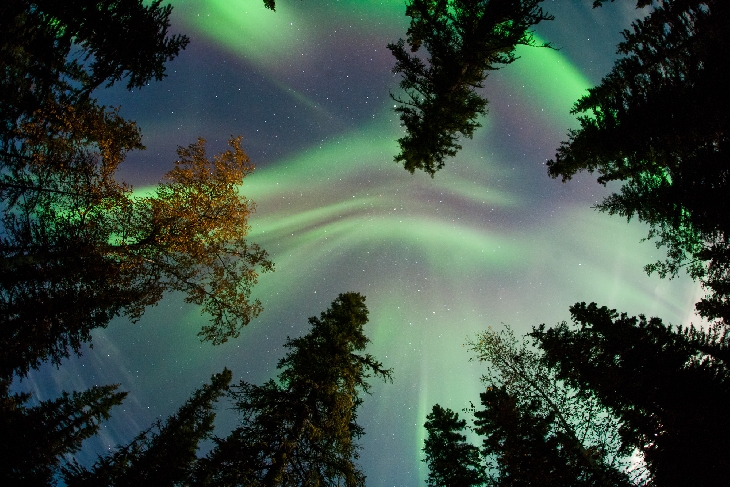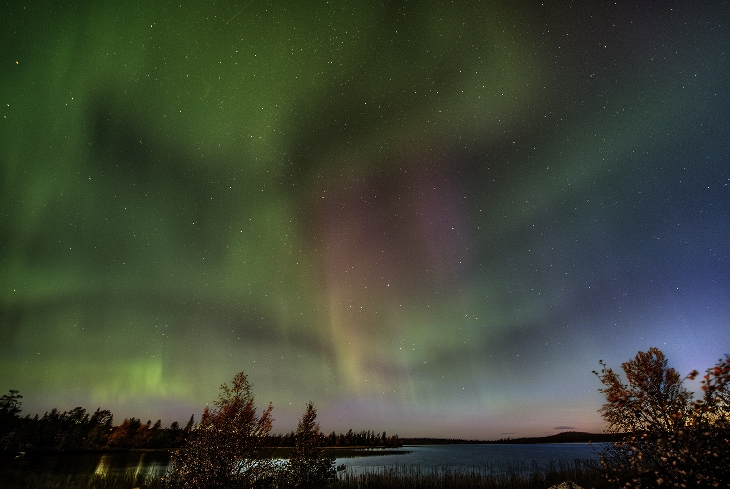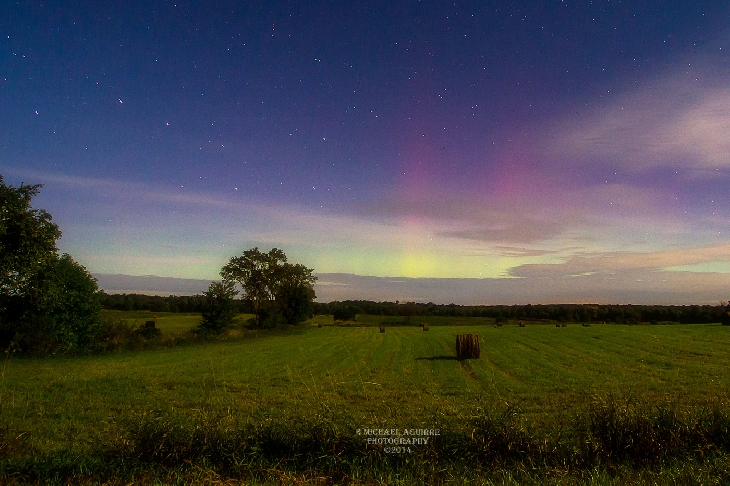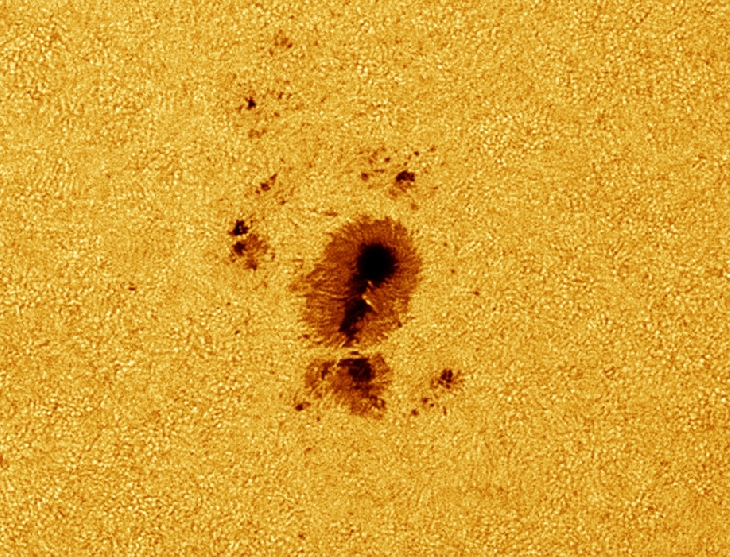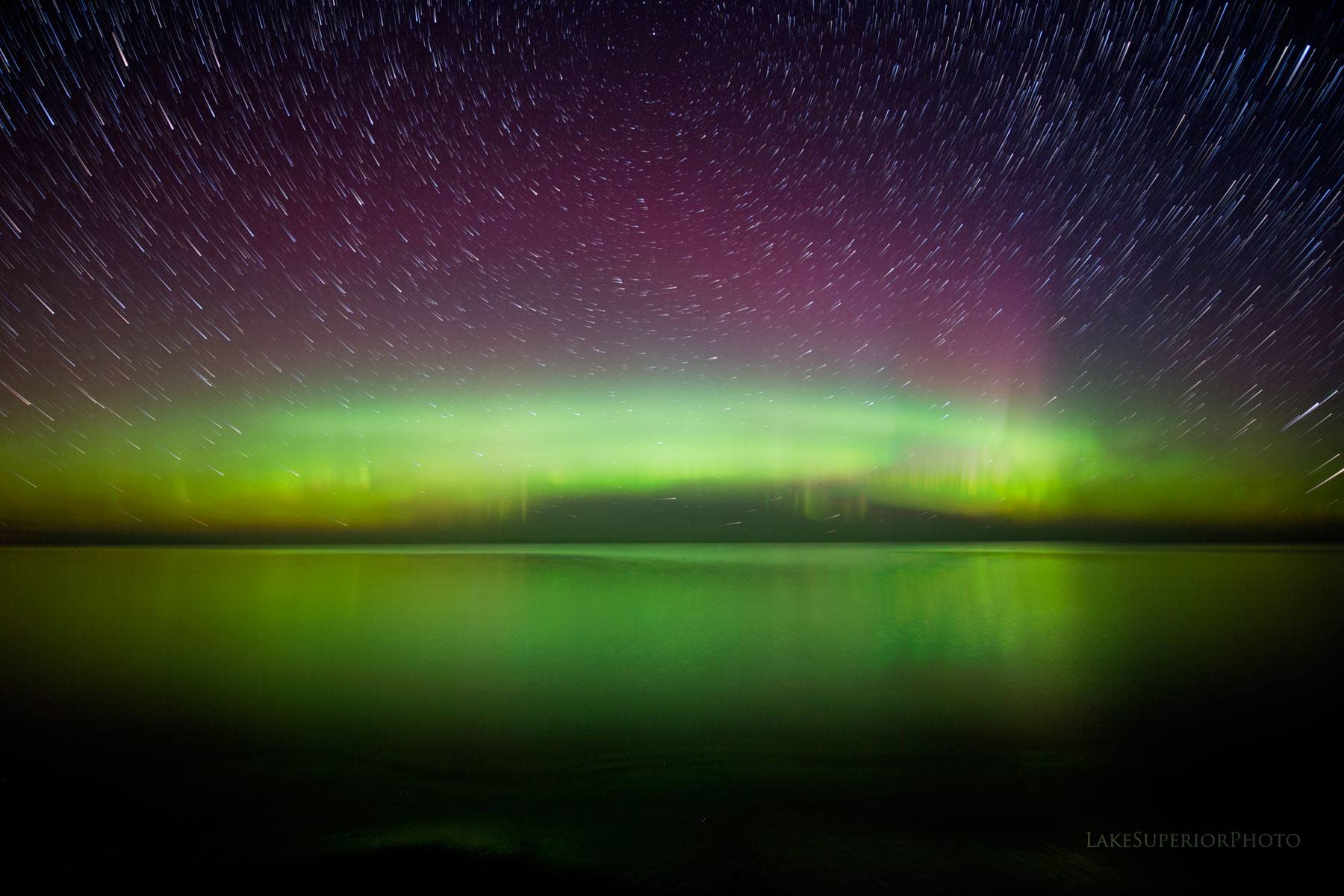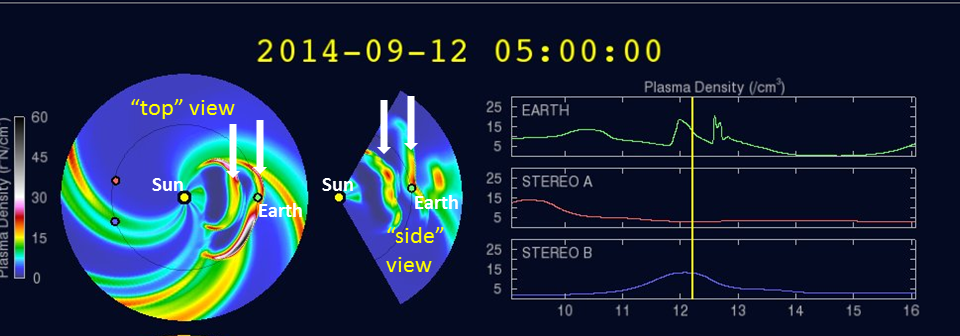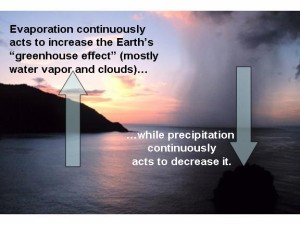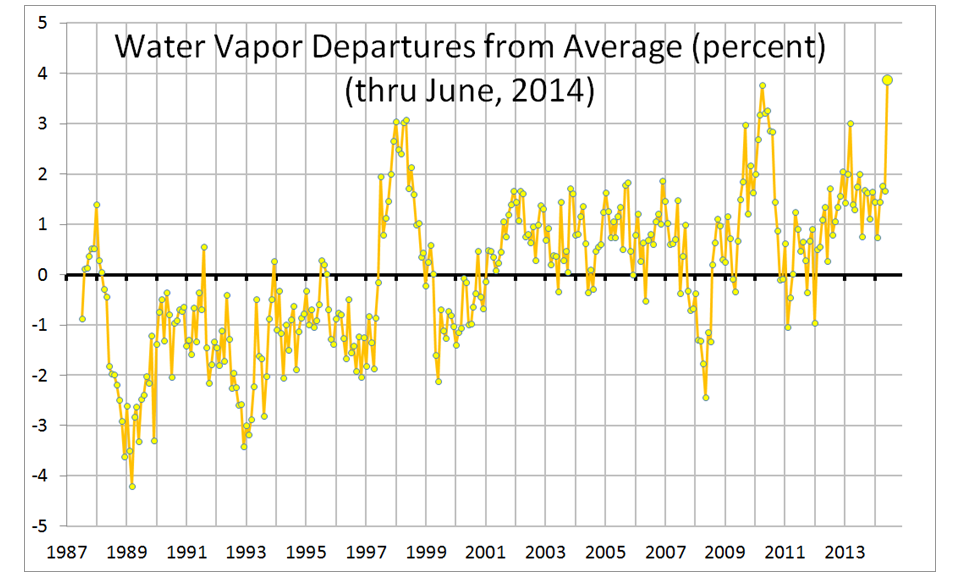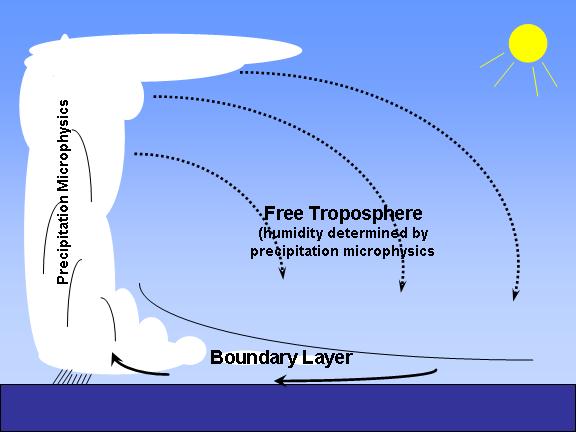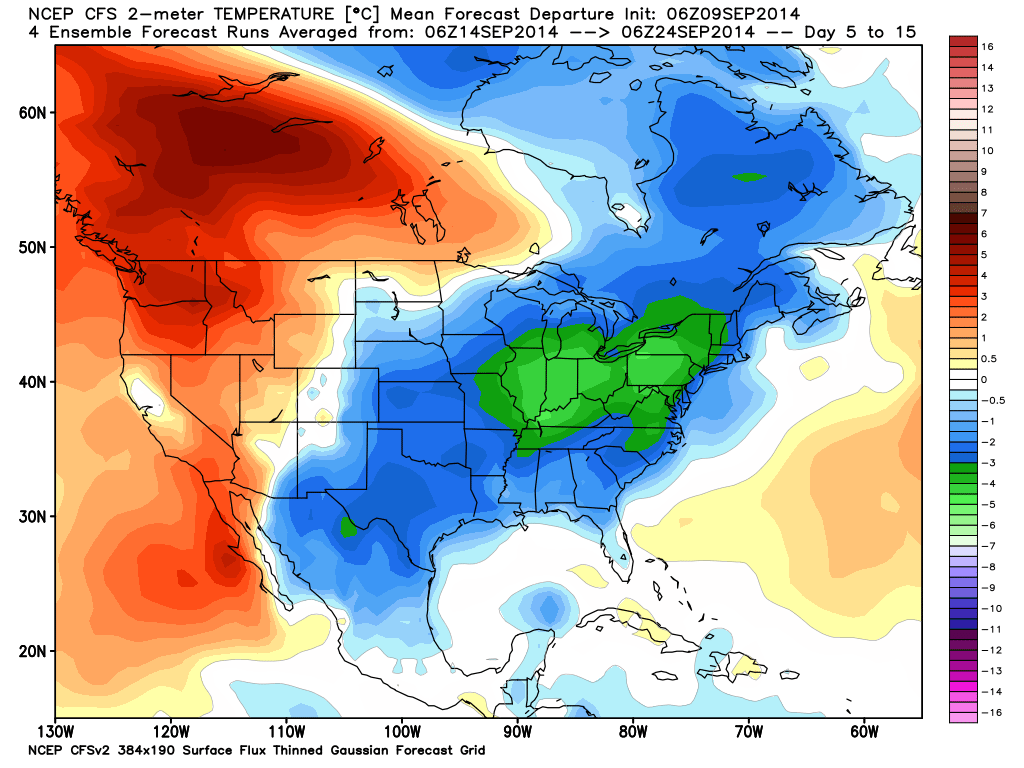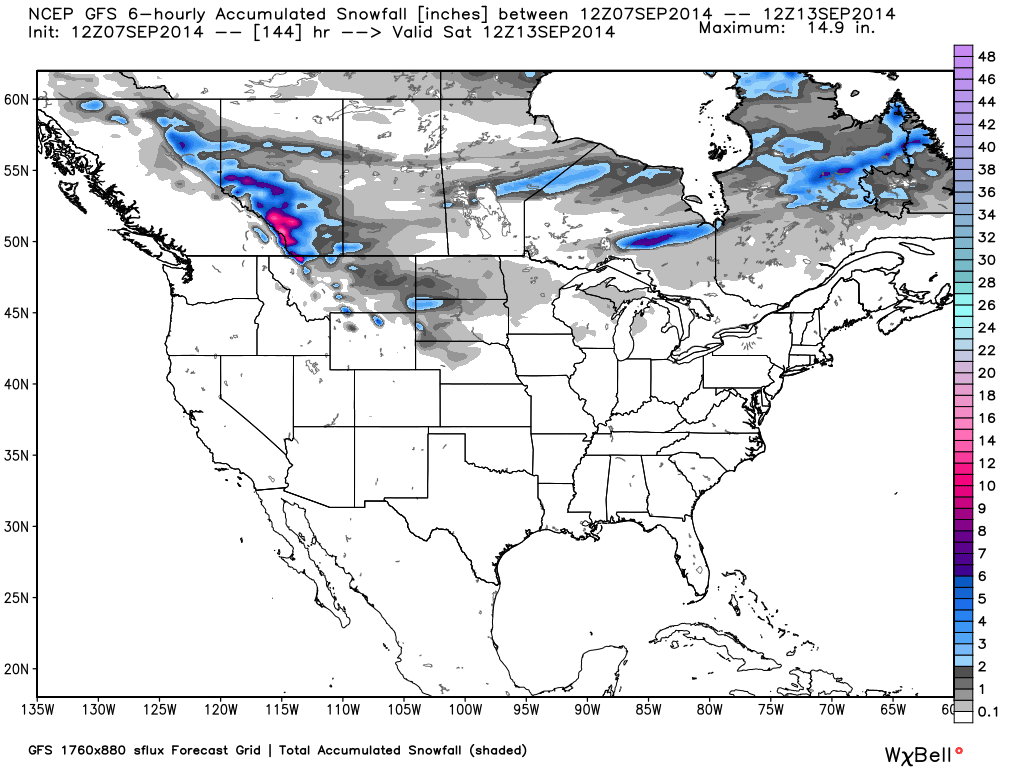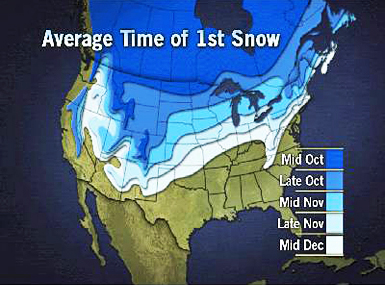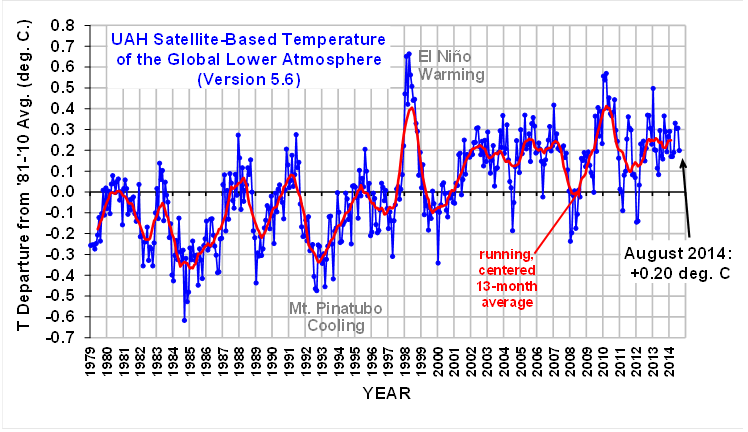I’d like to take you through a little thought experiment.
We all know that global warming has been on hiatus – set on pause – however you like to characterize the lack of significant warming, for over 15 years. Depending on how you do the statistics, the vast majority of the climate models used to guide our energy policy have over-predicted the surface warming trend since the satellite record began way back in 1979.
Oh, and those aren’t just failed forecasts…they are failed hindcasts. Even knowing the answer, the climate modelers can’t explain why the Earth hasn’t warmed as fast as it was supposed to.
The most cited potential reason for this unexpected inconvenience is that the oceans have been taking up the extra heat and replacing it with cooler water from the ocean depths. In that scenario, the natural ocean surface-cooling mechanism now in progress (if it exists) will eventually go back to normal, and surface warming will return with a vengeance. Just you wait and see.
But what if this supposed natural ocean fluctuation, which is supposedly cooling the surface, was reversed?
What if warming was set on fast forward, rather than pause? What if surface warming was progressing faster than 95% of the climate models had predicted, rather than slower than 95% of the models? How would the global warming establishment be playing it?
After watching the IPCC crowd for the last 25+ years, I feel pretty confident they would be falling all over themselves declaring “it’s worse than we thought!” They would be adjusting the sensitivity of their models to produce even more warming.
Yet, they would never substantially reduce the climate sensitivity of their models to produce less warming, as seen in nature. In other words, if warming hasn’t materialized, then we must have faith that it will eventually appear – because the climate system must be really sensitive…
So that the climate researchers’ lives have meaning.
But…if there happens to be *faster* warming than expected, well, the experts would be all too willing to adjust their models to have even greater climate sensitivity.
This is a reflection of the fact that the global warming establishment is biased toward high climate sensitivity. It is a specific example of the tendency of natural scientists to view nature as fragile, full of tipping points and hobgoblins.
That they fancy themselves as objective is embarrassing to me. No, I don’t consider myself completely objective either. But at least I can entertain alternative possibilities regarding the sensitivity of the climate system. If a scientist entertains anything that smacks of “skepticism”, however, they are not allowed to play in the IPCC sandbox.
Both of these scenarios: (1) the lack of significant warming, or (2) rapid warming, could happen with a climate system that warms exactly the same amount in the next 100 years (that is, has the same climate sensitivity). The difference is the timing of natural warming and cooling events, which can last two or three decades.
But it is unsettling how our feelings about climate change (and the political rhetoric and policy changes) can waver based upon what happens over only a year or two. Yet, the rate of both surface and deep ocean warming since the 1950s, after accounting for natural El Nino and La Nina fluctuations, suggests no cause for alarm.
If faster warming does resume in the coming months and years, it’s important to stay focused on the amount of warming…over the long term. Thinking and talking in qualitative terms, like record warm years, can be used to fool and manipulate people’s emotions on the subject.
Even a new “record warmest year”, year after year, is not that significant if the total warming ends up being only 1 deg. C more over the next 100 years.
And until the models can explain what happened in the past they should not be trusted for guiding policy into the future.

 Home/Blog
Home/Blog